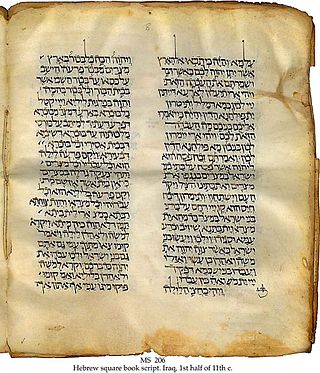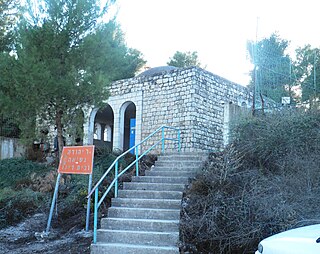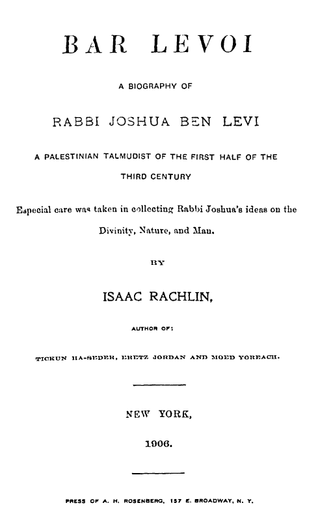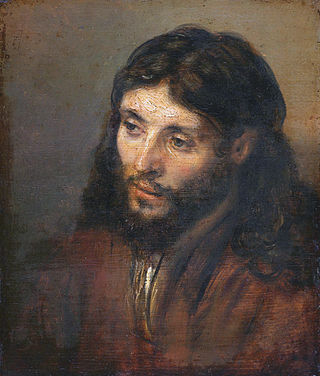Rabbi Abbahu was a Jew and Talmudist of the Talmudic Academies in Syria Palaestina from about 279 to 320 CE and is counted a member of the third generation of Amoraim. He is sometimes cited as Rabbi Abbahu of Kisrin.
Judah ha-Nasi or Judah I, known simply as Rebbi or Rabbi, was a second-century rabbi and chief redactor and editor of the Mishnah. He lived from approximately 135 to 217 CE. He was a key leader of the Jewish community in Roman-occupied Judea after the Bar Kokhba revolt.

Akiva ben Joseph, also known as Rabbi Akiva, was a leading Jewish scholar and sage, a tanna of the latter part of the first century and the beginning of the second century. Rabbi Akiva was a leading contributor to the Mishnah and to Midrash halakha. He is referred to in the Talmud as Rosh la-Hakhamim "Chief of the Sages". He was executed by the Romans in the aftermath of the Bar Kokhba revolt.

Shimon bar Yochai or Shimon ben Yochai, also known by the acronym Rashbi, was a 2nd-century tannaitic sage in ancient Judea. He was one of the most eminent disciples of Rabbi Akiva. The Zohar, a 13th century foundational work of Kabbalah, is ascribed to him by Kabbalistic tradition.
Yohanan ben Zakkai, sometimes abbreviated as Ribaz for Rabbi Yohanan ben Zakkai, was one of the Tannaim, an important Jewish sage during the late Second Temple period and in the transformative post-destruction era. He was a primary contributor to the core text of Rabbinic Judaism, the Mishnah. His name is often preceded by the honorific title, "Rabban." He is widely regarded as one of the most important Jewish figures of his time, and his escape from the Roman destruction of Jerusalem may have been instrumental in Rabbinic Judaism's survival post-Temple. His tomb is located in Tiberias within the Maimonides burial compound.
Yeshu is the name of an individual or individuals mentioned in rabbinic literature, Jesus when used in the Talmud. The name Yeshu is also used in other sources before and after the completion of the Babylonian Talmud. It is also the modern Israeli spelling of Jesus.

Onkelos, possibly identical to Aquila of Sinope, was a Roman national who converted to Judaism in Tannaic times. He is considered to be the author of the Targum Onkelos.

Judah II or Nesi'ah I was a Jewish sage who lived in Tiberias in the Land of Israel, in the middle of the third century CE.
Shimon ben Lakish, better known by his nickname Reish Lakish, was an amora who lived in the Roman province of Judaea in the third century. He was reputedly born in Bosra, east of the Jordan River, around 200 CE, but lived most of his life in Sepphoris. Nothing is known of his ancestry except his father's name.

Rabbi Tarfon or Tarphon, a Kohen, was a member of the third generation of the Mishnah sages, who lived in the period between the destruction of the Second Temple and the fall of Betar.

Sifre refers to either of two works of Midrash halakha, or classical Jewish legal biblical exegesis, based on the biblical books of Numbers and Deuteronomy.

Joshua ben Levi was an amora, a scholar of the Talmud, who lived in the Land of Israel in the first half of the third century. He lived and taught in the city of Lod. He was an elder contemporary of Johanan bar Nappaha and Resh Lakish, who presided over the school in Tiberias. With Johanan bar Nappaha, he often engaged in homiletic exegetical discussions.
Eliezer ben Hurcanus or Hyrcanus was one of the most prominent Sages (tannaim) of the 1st and 2nd centuries in Judea, disciple of Rabban Yohanan ben Zakkai and colleague of Gamaliel II, and of Joshua ben Hananiah. He is the sixth most frequently mentioned sage in the Mishnah.
Joshua ben Hananiah, also known as Rabbi Yehoshua, was a leading tanna of the first half-century following the destruction of the Second Temple. He is the seventh-most-frequently mentioned sage in the Mishnah.
Eleazar ben Shammua or Eleazar I was a rabbi of the 2nd century, frequently cited in rabbinic writings as simply Rabbi Eleazar (Bavli) or Rabbi Lazar רִבִּי לָֽעְזָר (Yerushalmi). He was of priestly descent and rich, and acquired great fame as a teacher of traditional law.

Allusions in rabbinic literature to the Biblical figure Adam, created according to the Book of Genesis by God in the Garden of Eden as the first man, expand and elaborate and draw inferences from what is presented in the text of the Bible itself.

Allusions in rabbinic literature to the Biblical character Job, the object of sufferings and tribulations in the Book of Job, contain various expansions, elaborations and inferences beyond what is presented in the text of the Bible itself.

There are several passages in the Talmud which are believed by some scholars to be references to Jesus. The name used in the Talmud is "Yeshu", the Aramaic vocalization of the Hebrew name Yeshua.
The Tzoah Rotachat in the Talmud and the Zohar is a location in Gehenna where the souls of Jews who committed certain sins are sent for punishment.
Rabbi Isaac Nappaha, or Isaac the smith, was a rabbi of the 3rd-4th centuries who lived in the Galilee.







